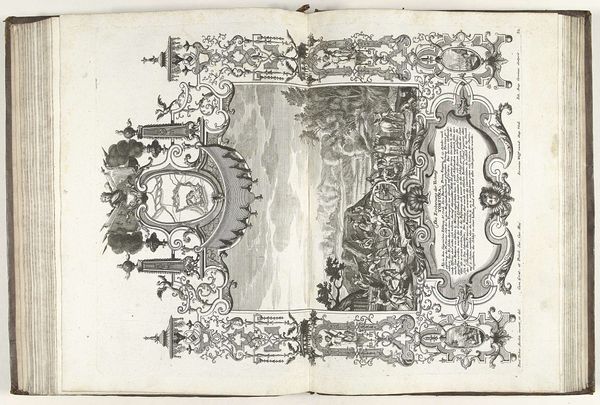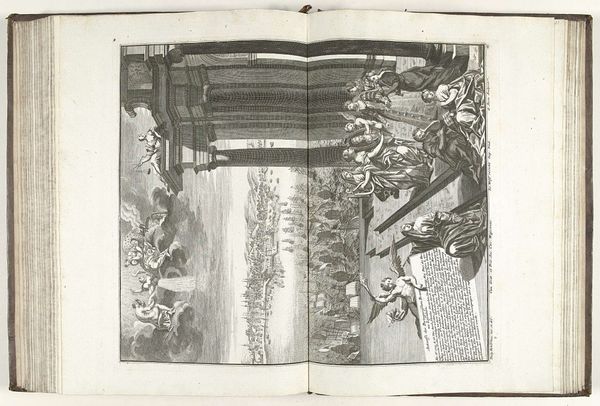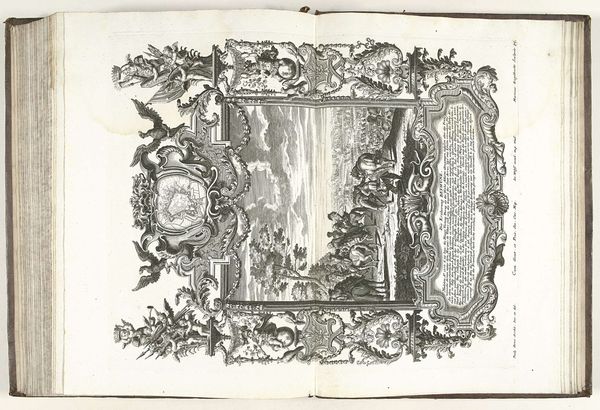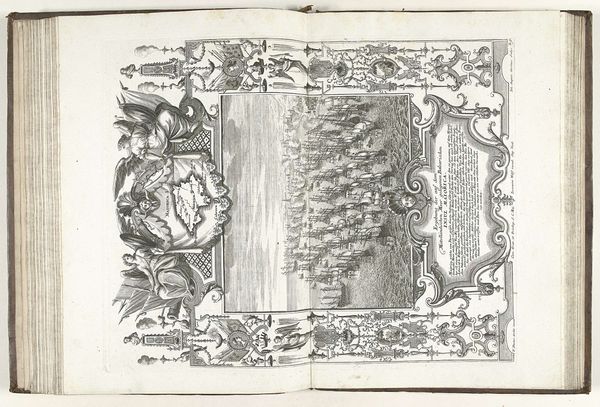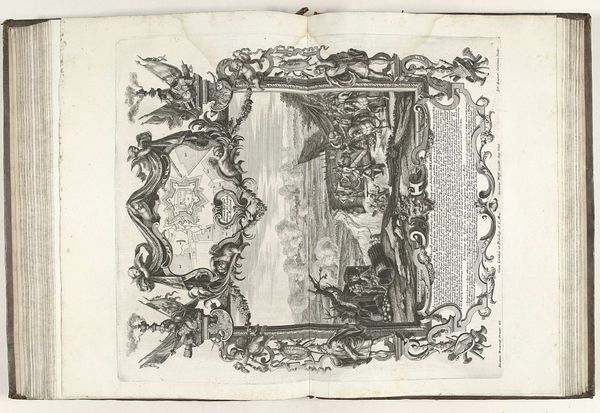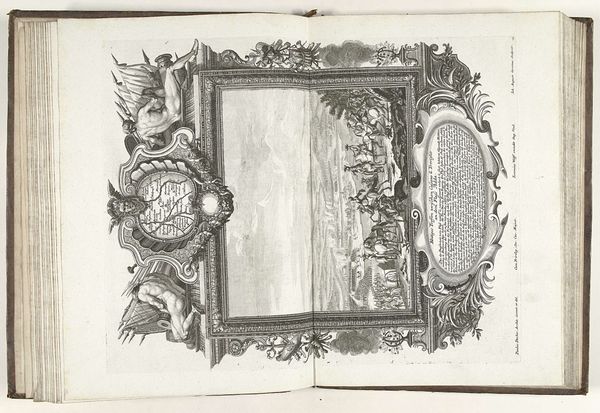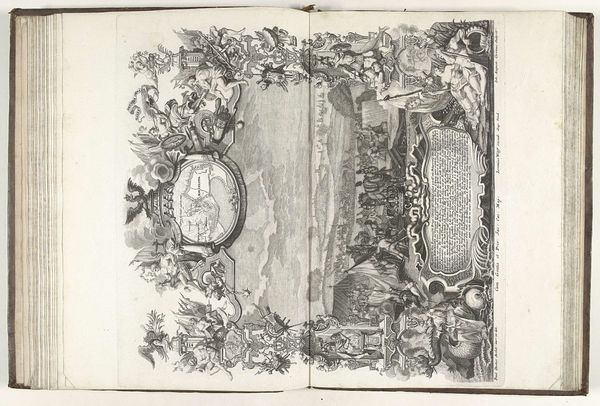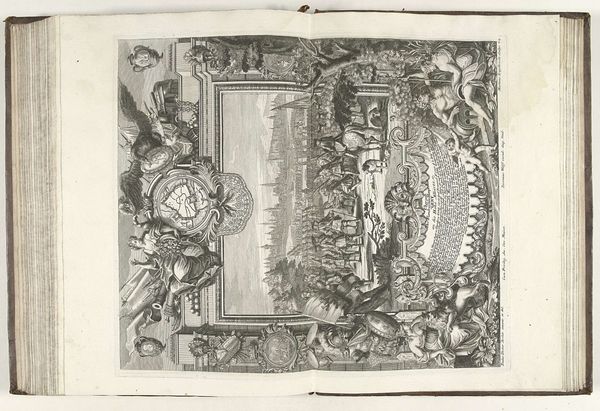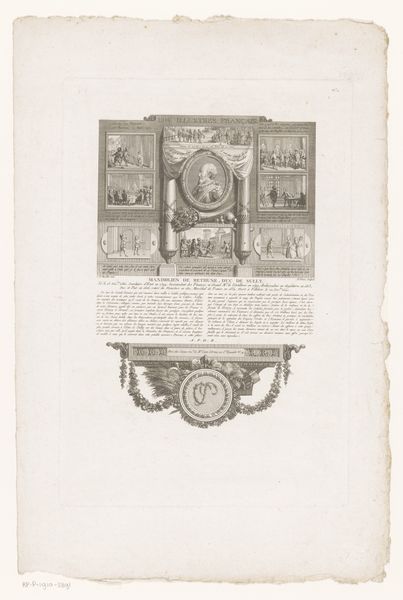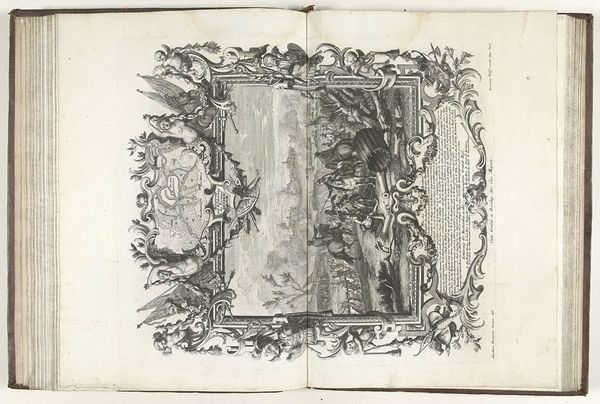
print, engraving
#
baroque
# print
#
old engraving style
#
landscape
#
personal sketchbook
#
sketchbook drawing
#
cityscape
#
history-painting
#
sketchbook art
#
engraving
Dimensions: height 430 mm, width 378 mm
Copyright: Rijks Museum: Open Domain
Curator: What strikes me first is the incredibly fine detail rendered across this double-page spread. Editor: Indeed. This print, titled "Bestorming en verovering van Gaeta, 1707" by Johann August Corvinus, and made between 1712 and 1715, demonstrates incredible skill with the engraving medium. The labour involved must have been extensive. Look at the tiny marks, lines, and hatching, all contributing to this highly detailed image. Curator: Formally, the composition draws your eye in, doesn't it? The central framed image depicting the naval assault is flanked by elaborate ornamental borders. There’s almost a mirroring effect, enhancing its symmetry. Editor: Precisely, the print's success lies not only in the craftsmanship but in its socio-historical context. Prints like these played a crucial role in disseminating information about battles to a wider audience. Mass production enabled a new form of access, offering visualizations of key historical and political events beyond the elite. Curator: Good point. Although printed, its decorative and allegorical framing nods toward high art—figures and emblems abound. The level of detail makes me want to inspect it closer, scrutinize it like a unique object rather than a simple mass produced illustration. Editor: Yes, there is this tension here—the function of printmaking versus this demonstration of refined technique. These visual representations served as a potent tool to reinforce state power, crafting specific narratives of triumph and dominance that impacted the society of the time. What was being traded beyond just paper? Curator: The very paper it’s printed on suggests a story of material production and value. Even the binding would signify economic value to its commissioners, a way of elevating propaganda through craftsmanship and embellishment. It reminds me to consider the accessibility to this artwork. Who exactly got to own a volume like this, to view this work? Editor: Exactly! By understanding printmaking as a process interwoven with commerce, labor, and statecraft, we glean how such artwork not only depicted history, but became instrumental in making history itself. Curator: It's been truly eye-opening to examine this work with its artistic form alongside its profound political underpinnings. Editor: Agreed. The confluence of technique, medium and social context here provides, literally and figuratively, a wealth of insight.
Comments
No comments
Be the first to comment and join the conversation on the ultimate creative platform.
